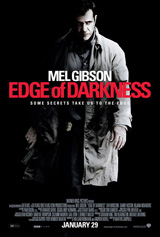Usually when we talk about pronouns, what immediately come to mind are personal pronouns—I, you, he, she, it, etc.—that refer to specific people or things. As discussed over the past couple of weeks, pronouns, like nouns, have four properties—number, person, gender, and case. Having already discussed the first three properties, let’s turn our attention to case, which almost exclusively applies to personal pronouns.
Case refers to how a noun or pronoun functions in a sentence. If a pronoun serves as the subject of a sentence or clause, it should be in subjective, or nominative, case:
Last Friday, I attended a sneak peek of James Cameron’s Avatar.
He hasn’t directed a feature film since 1997’s Titanic.
If a pronoun serves as a predicate nominative after a linking verb, it should also be in subjective case:
It was I who on Monday afternoon reserved tickets for the event.
It was he who introduced the footage, appearing larger than life on the giant Imax screen.
Be careful that you don’t let your ear mislead you. In everyday speech, incorrect forms of predicate nominatives (It was me …, It was him …) are used all the time because we tend to assign objective case to any pronoun that follows the verb.
A pronoun should be in objective case, however, when it serves as the direct or indirect object to a verb or the object of a preposition:
When Cameron appeared on the screen, the audience applauded him.
When we entered the theater, an employee handed us 3D glasses.
Although the auditorium was almost full, there was an empty seat by me.
Although case applies to both nouns and pronouns, only some pronouns change their form according to how they function in a sentence. In the first-person singular, the personal pronoun I should be used in the subjective case:
I arrived ninety minutes early for the screening.
(I is always capitalized. All other pronouns are only capitalized when they start a sentence or are used as part of an honorific title, such as Her Majesty.)
However, when you need a first-person singular pronoun in objective case, use me:
Even though I arrived so early, there were already fifteen people in line in front of me.
Likewise, in the first-person plural, we is used in the subjective case, while us is used in the objective case:
We waited patiently in the queue while late arrivers lined up after us.
In the second-person, the personal pronoun you is used, whether singular or plural and whether subjective or objective case:
I told my boyfriend, “You should have been there.”
He replied, “I had to work and couldn’t go with you.”
Readers, you may have missed the sneak peek, but I encourage you to check out the trailer online.
You always takes a plural verb, whether singular or plural.
In the third-person, the singular subjective-case pronouns he and she become him and her in the objective case.
The theater’s general manager welcomed the audience to the screening. She gave us discount coupons to the box office and concessions stand.
The audience laughed at her, however, when she told us we could buy tickets to the movie when it came out December 18.
A representative from Fox introduced the footage. He encouraged us to see the movie when it comes out later this year.
Eager for the show to start, the audience clapped politely for him.
It, however, stays the same whether in subjective or objective case:
Finally, it started.
The audience members put on their 3D glasses to watch it.
Finally, in the third-person plural, use they for the subjective case but them for the objective case:
They were among the first to see scenes from the film.
Three more screenings were scheduled for more audiences to see it after them.
Overall, only seven words in the English language change form depending on how they function in the sentence: I/me, we/us, he/him, she/her, they/them, who/whom, and whoever/whomever.
This table summarizes the numbers, persons, and cases of personal pronouns:
Singular Pronouns
Nominative Objective
First Person I me
Second Person you you
Third Person he, she, it him, her, it
Plural Pronouns
Nominative Objective
First Person we us
Second Person you you
Third Person they them
Personal Pronouns and Their Relatives
Here are a few guidelines for personal pronouns working alongside relative pronouns.
When a relative pronoun is followed by a personal pronoun and they both refer to the same antecedent, the personal pronoun matches the antecedent in gender and number:
I sat next to a man who brought his young son.
When a relative pronoun is followed by a personal pronoun that refers to a different antecedent, however, the personal pronoun matches its own antecedent—not that of the relative pronoun—in gender and number:
I also sat next to a man and a woman who had invited him along even though he’s not a fan of science fiction.
However, personal and relative pronouns working together do not have to match in case.
He deferred to her, who was an expert on the genre.
In this example, the objective pronoun her is the antecedent of who, which is in the nominative case. (We’ll talk about the difference between who and whom in a future post.)
Do you have a question about pronouns? Let me know, and I’ll include it in a future installment of Mots Justes’ ongoing series.
The Mots Justes Series on Pronouns
Part II—Location, Location, Location
Part V—Gender, Plus “They” as a Gender-Neutral Singular Pronoun
To read my writeup on the Avatar sneak peek, visit Moving Pictures Magazine.
Resources
Chicago Manual of Style, The. 15th ed. Chicago: The University of Chicago Press, 2003.
Fogarty, Mignon, Grammar Girl’s Quick and Dirty Tips for Better Writing. New York: Holt Paperbacks, 2008.
Hacker, Diana, The Bedford Handbook for Writers, 3rd ed. Boston: St. Martin’s Press: 1991.
Strunk Jr., William, and White, E.B. The Elements of Style. 4th ed. New York: Longman, 2000.







